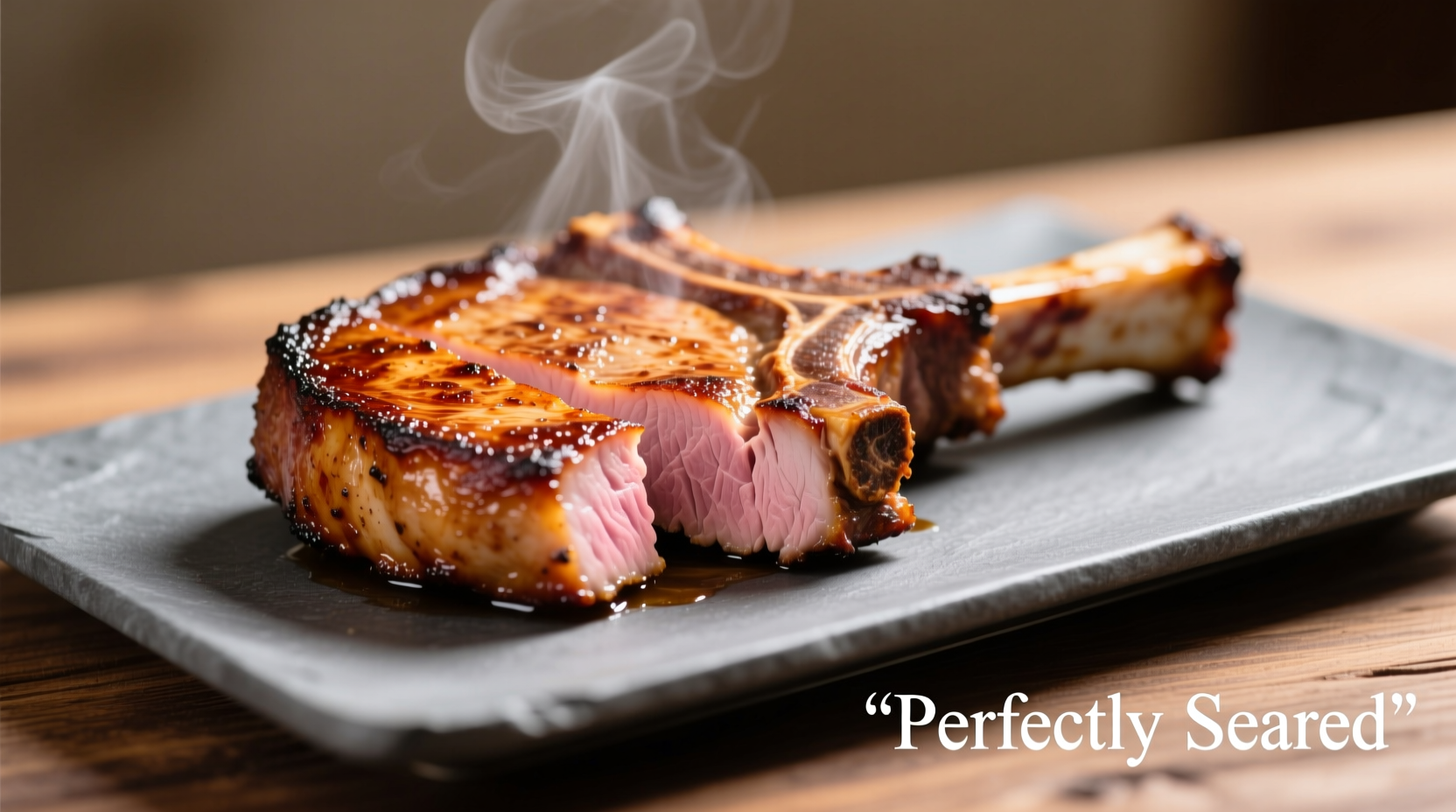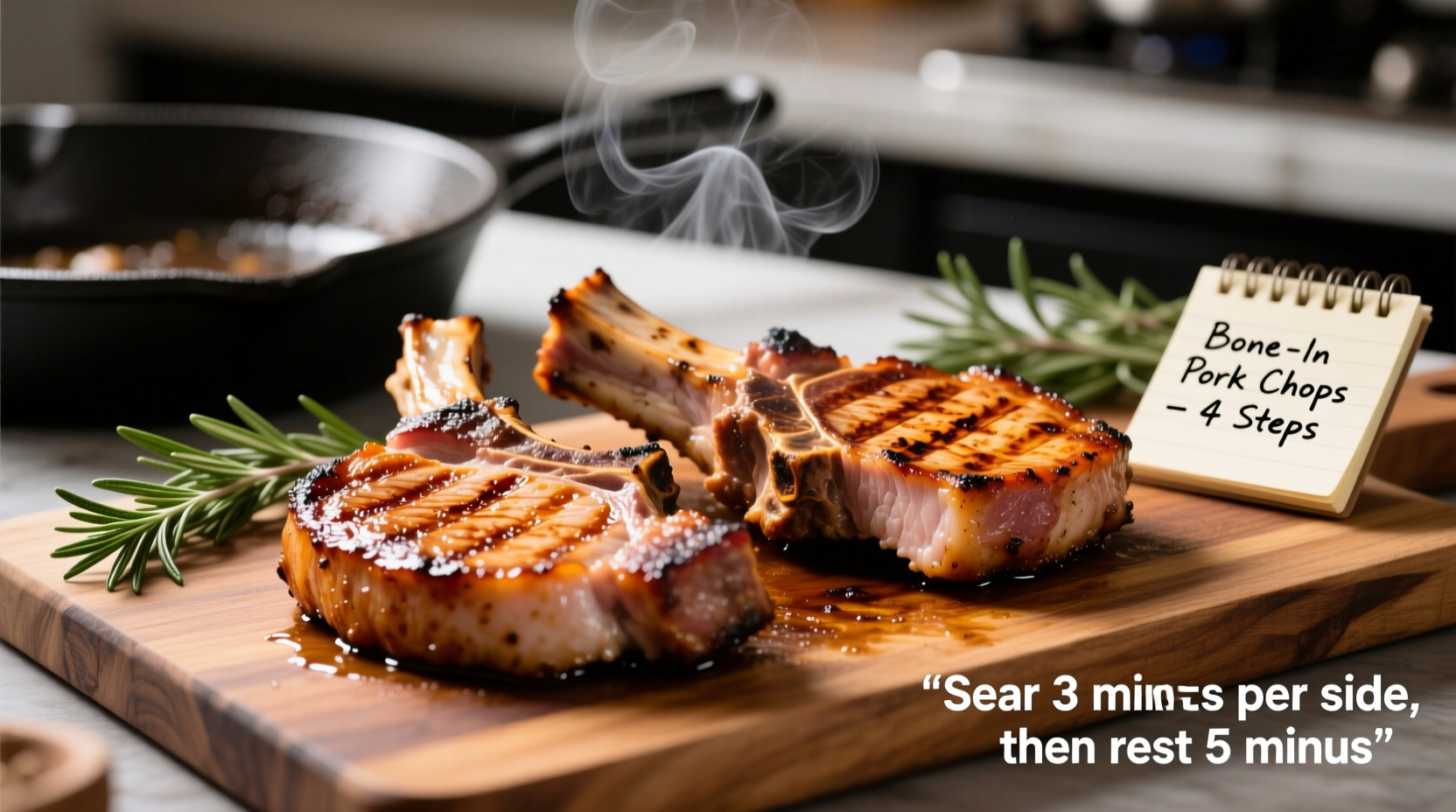The best way to cook bone-in pork chops is by searing them in a hot skillet for 3-4 minutes per side, then finishing in a 400°F oven for 8-12 minutes until they reach 145°F internal temperature with a 3-minute rest. This two-step method ensures a crispy exterior while keeping the meat juicy and perfectly cooked to USDA safety standards.
Why Bone-In Pork Chops Deserve Special Attention
Many home cooks struggle with bone-in pork chops because they don't account for how the bone affects heat distribution. Unlike boneless cuts, the bone insulates the surrounding meat, requiring careful temperature management to avoid undercooked centers or overcooked edges. Professional chefs use a two-stage cooking method that leverages both stovetop searing and oven finishing to achieve consistent results.
Selecting Quality Pork Chops for Perfect Results
Start with chops that are at least 1½ inches thick—thinner cuts dry out too quickly. Look for chops with even marbling throughout the meat and a pinkish-red color. The bone should be clean with minimal discoloration. USDA Prime or Choice grades offer the best marbling for juicy results, though Select grade works with careful cooking.
| Chop Thickness | Sear Time (per side) | Oven Time | Total Cooking Time |
|---|---|---|---|
| 1 inch | 2-3 minutes | 5-7 minutes | 9-13 minutes |
| 1½ inches | 3-4 minutes | 8-12 minutes | 14-20 minutes |
| 2 inches | 4-5 minutes | 12-15 minutes | 20-25 minutes |
Professional-Grade Preparation Techniques
Remove pork chops from refrigeration 30-45 minutes before cooking to bring them to room temperature—this prevents uneven cooking. Pat the surface completely dry with paper towels; moisture is the enemy of proper searing. Season generously with salt at least 15 minutes before cooking to allow penetration. For optimal crust formation, avoid adding pepper until after cooking, as it can burn at high temperatures.

The Two-Stage Cooking Method That Never Fails
Heat a heavy skillet (cast iron works best) over medium-high heat until shimmering hot. Add a high-smoke point oil like avocado or grapeseed oil. Place chops in the skillet away from you to prevent oil splatter. Press gently with a spatula for full contact. Sear undisturbed for 3-4 minutes until a deep golden crust forms.
Flip chops and add aromatics like smashed garlic cloves and fresh thyme sprigs to the pan. Transfer the skillet to a preheated 400°F oven. Cook until a meat thermometer inserted horizontally into the thickest part (away from the bone) reads 140°F. The USDA Food Safety and Inspection Service confirms 145°F with 3-minute rest is safe for pork, as the residual heat will bring it to the final 145°F target.
Understanding Carryover Cooking and Resting
Many cooks make the critical mistake of skipping the resting period. When you remove chops from heat, the internal temperature continues to rise 5-10 degrees due to residual heat (carryover cooking). Resting for 5-7 minutes allows juices to redistribute throughout the meat. Cutting too soon releases precious moisture onto your cutting board rather than staying in the chop. This scientific principle, documented by culinary research organizations like America's Test Kitchen, is essential for juicy results.
Troubleshooting Common Pork Chop Problems
Dry, tough chops: Usually caused by overcooking or skipping the rest period. Always use a thermometer and follow the 145°F target.
Burnt exterior, raw interior: Heat was too high during searing or oven temperature was insufficient for proper carry-through cooking.
Uneven cooking: Failing to bring chops to room temperature first or not accounting for the insulating effect of the bone.
Serving Suggestions That Elevate Your Dish
Pair perfectly cooked pork chops with simple sides that complement without overwhelming. A classic preparation includes roasted apples or pears that caramelize alongside the chops in the oven. For sauce options, deglaze the pan with apple cider or chicken stock after removing the chops, scraping up the flavorful browned bits (fond), then finish with a knob of cold butter for richness. Fresh herbs like sage or rosemary add aromatic complexity without masking the pork's natural flavor.











 浙公网安备
33010002000092号
浙公网安备
33010002000092号 浙B2-20120091-4
浙B2-20120091-4